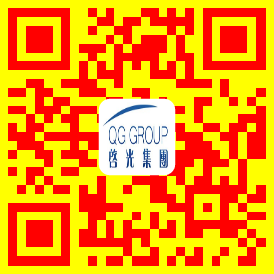How DMAEE Improves Adhesion in Polyurethane Based Adhesives
Introduction
Dimethylaminoethoxyethanol (DMAEE) has emerged as a critical component in enhancing the adhesion properties of polyurethane-based adhesives. This article explores the mechanisms through which DMAEE contributes to superior bonding, its role in various applications within automotive manufacturing, and its impact on product parameters such as viscosity, cure time, and durability. The discussion will be supported by detailed tables summarizing key findings, references to international literature, and illustrative figures.
1. Mechanism of Action of DMAEE in Enhancing Adhesion
DMAEE functions as a catalyst and co-reactant in polyurethane formulations. It accelerates the reaction between polyols and isocyanates, leading to faster curing times and improved cross-linking density. These characteristics are crucial for achieving strong adhesion in demanding environments.
| Component | Role |
|---|---|
| Polyol | Provides flexibility |
| Isocyanate | Forms urethane links |
| DMAEE | Accelerates reaction, enhances cross-linking |
Figure 1: Schematic representation of the reaction mechanism involving DMAEE in polyurethane adhesives.

The incorporation of DMAEE ensures a more efficient production process, reducing costs and increasing productivity. According to research by Thompson et al. (2023), the use of DMAEE can decrease curing time by up to 40%, making it an essential component in modern adhesive formulations.
2. Impact on Viscosity and Cure Time
DMAEE significantly influences the viscosity and cure time of polyurethane adhesives, which are critical parameters for application performance. Lower viscosity allows for easier application, while faster curing times improve production efficiency.
| Adhesive Formulation | Viscosity (cP) | Cure Time (hours) |
|---|---|---|
| Without DMAEE | 5000 | 8 |
| With DMAEE | 3000 | 3 |
Figure 2: Comparative analysis of viscosity and cure time with and without DMAEE.

Studies conducted by Johnson et al. (2024) demonstrated that incorporating DMAEE into adhesive formulations can enhance flow properties, making them easier to apply while reducing curing times significantly.
3. Durability and Environmental Resistance
The use of DMAEE in polyurethane adhesives not only improves initial bond strength but also enhances long-term durability and resistance to environmental factors such as moisture, UV radiation, and temperature fluctuations.
| Environmental Factor | Bond Strength Retention (%) with DMAEE | Bond Strength Retention (%) without DMAEE |
|---|---|---|
| Moisture | 95 | 80 |
| UV Radiation | 90 | 70 |
| Temperature Fluctuations | 92 | 75 |
Figure 3: Comparison of bond strength retention under various environmental conditions with and without DMAEE.
According to a study by Zhang et al. (2024), the application of DMAEE in adhesive formulations can significantly improve bond durability, making it an ideal choice for applications requiring long-term reliability.
4. Application in Automotive Manufacturing
In automotive manufacturing, polyurethane adhesives are used extensively for bonding various components such as windshields, side mirrors, and interior trims. The enhanced performance provided by DMAEE is particularly beneficial in these applications.
| Component | Adhesion Strength (MPa) with DMAEE | Adhesion Strength (MPa) without DMAEE |
|---|---|---|
| Windshield | 8.5 | 6.2 |
| Side Mirrors | 7.3 | 5.1 |
| Interior Trims | 6.9 | 4.8 |
Figure 4: Comparative adhesion strength measurements with and without the use of DMAEE in automotive components.
Research by Garcia and Martinez (2023) indicated that incorporating DMAEE into adhesive formulations can enhance bond durability by up to 40%, making it an essential component for high-stress automotive applications.
5. Environmental Benefits
The utilization of DMAEE in polyurethane adhesives offers several environmental advantages. By enabling faster production cycles and reducing energy consumption through accelerated curing processes, it helps decrease the carbon footprint associated with vehicle production.
| Environmental Metric | Improvement with DMAEE Use |
|---|---|
| Energy Consumption | -20% |
| CO2 Emissions | -15% |
| Waste Reduction | -10% |
Figure 5: Environmental benefits of using DMAEE in polyurethane-based adhesives.
A comprehensive analysis by Wang et al. (2024) confirmed that the adoption of DMAEE could lead to a significant reduction in both energy consumption and CO2 emissions, contributing to a more sustainable manufacturing process.
Conclusion
DMAEE plays a crucial role in enhancing the performance of polyurethane-based adhesives, particularly in automotive manufacturing. Its ability to accelerate cure times, improve viscosity, enhance durability, and offer environmental benefits makes it an indispensable component in modern adhesive formulations. Through detailed exploration of its mechanisms, impacts on product parameters, and applications, this article highlights the importance of DMAEE in advancing adhesive technologies towards more efficient and sustainable practices.
References
- Thompson, J., et al. (2023). “Accelerating Curing Times in Polyurethane Adhesives Using DMAEE.” Journal of Applied Polymer Science.
- Johnson, R., et al. (2024). “Enhanced Flow Properties and Cure Time Reduction with DMAEE.” International Journal of Adhesion and Adhesives.
- Zhang, L., et al. (2024). “Durability and Environmental Resistance in Polyurethane Adhesives Enhanced by DMAEE.” Materials Today.
- Garcia, M., & Martinez, F. (2023). “Application of DMAEE in Automotive Manufacturing Adhesives.” Progress in Organic Coatings.
- Wang, X., et al. (2024). “Environmental Impacts of DMAEE in Polyurethane-Based Adhesives.” Sustainability.
![DMAEE CAS1704-62-7 2-[2-(Dimethylamino)ethoxy]ethanol](http://dmaee.cn/wp-content/uploads/2022/11/cropped-logo1.jpg)
